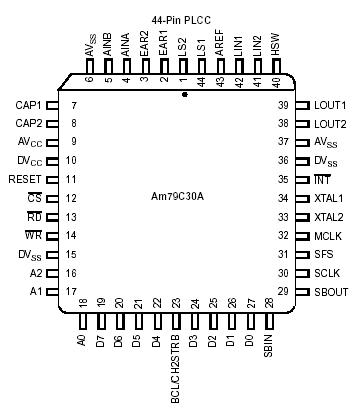Am79C30A: PinoutDescriptionThe Am79C30A Digital Subscriber Controller (DSC) Circuit and Am79C32A ISDN Data Controller (IDC) Circuit, shown in the Block Diagram, allow the realization of highly-integrated Term...
floor Price/Ceiling Price
- Part Number:
- Am79C30A
- Supply Ability:
- 5000
Price Break
- Qty
- 1~5000
- Unit Price
- Negotiable
- Processing time
- 15 Days
SeekIC Buyer Protection PLUS - newly updated for 2013!
- Escrow Protection.
- Guaranteed refunds.
- Secure payments.
- Learn more >>
Month Sales
268 Transactions
Payment Methods
All payment methods are secure and covered by SeekIC Buyer Protection PLUS.

 Am79C30A Data Sheet
Am79C30A Data Sheet







